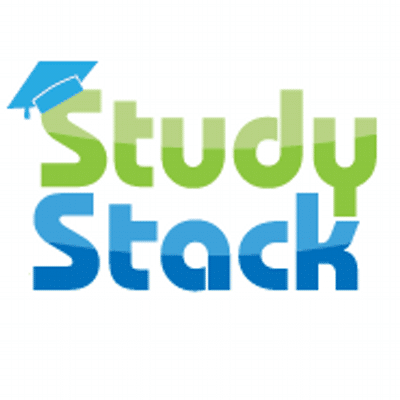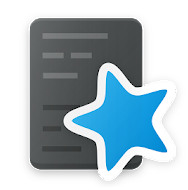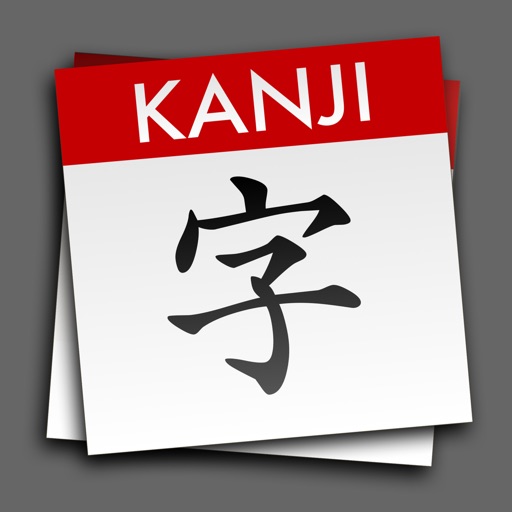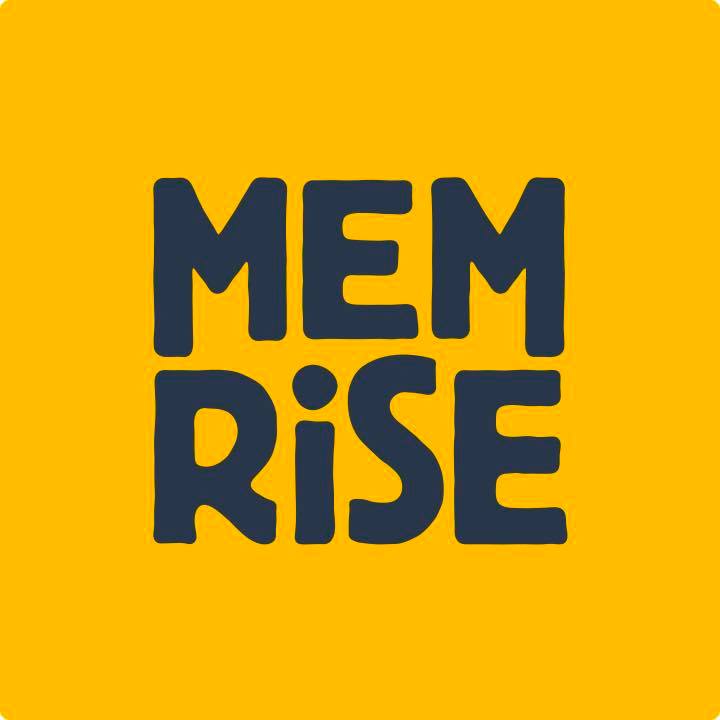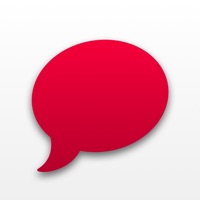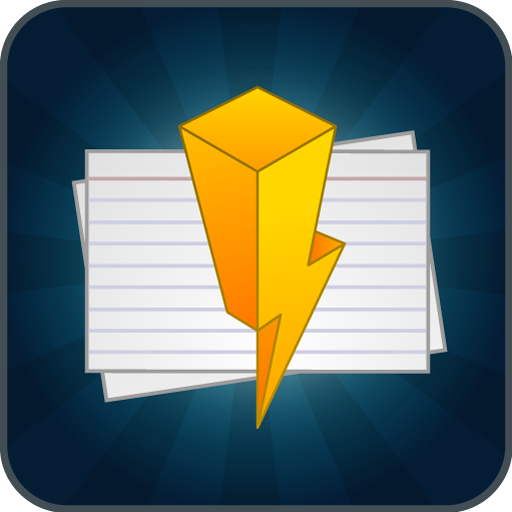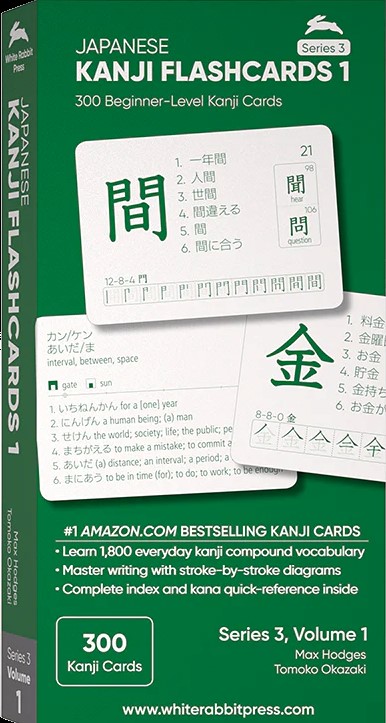
19 Japanese Flashcard Websites, Apps and Physical Cards for Flippin’ to Fluency
Japanese flashcards are awesome for practicing vocabulary, conjugation and even grammar.
I’ve been using flashcards since I started learning Japanese all the way to now working as a Japanese-English translator, so I’ve got plenty of recommendations!
Below, you’ll find my 19 recommended resources for both digital and physical Japanese flashcards, complete with pros and cons so you can find the option that suits you best.
All of them are well-designed and easy to use and many of them come with handy features like example sentences, pronunciation guides and automatic reviewing.
Contents
- Online Japanese Flashcards
- Japanese Flashcard Apps
- Best for Customizable Flashcards: Anki
- Best for Learning from Articles: DuoCards
- Best for Practicing Writing: StickyStudy
- Best for Real-Life Japanese: Memrise
- Best for Short-Term Studying: Brainscape
- Best for Travel Phrases: SpeakEasy
- Best for Group Studying: Quizlet
- Best for Minimalist Flashcards: Flashcard Machine
- Physical Japanese Flashcard Decks
- Best Comprehensive: White Rabbit Japan
- Best for Visuals: Dr. Moku’s Hiragana and Katakana Flashcards
- Best for Learning Kana: Japanese Hiragana and Katakana Flashcard Kit
- Best for Learning Hiragana: CARDDIA Japanese Syllabary—Hiragana
- Best for Basic Phrases: Travelflips
- Best for Beginner Kanji: Japanese Kanji Flashcards
- What to Consider When Choosing a Japanese Flashcards App
Download: This blog post is available as a convenient and portable PDF that you can take anywhere. Click here to get a copy. (Download)
Online Japanese Flashcards
Best for Learning Kanji: WaniKani
Summary: WaniKani teaches you 2,000 kanji from scratch, including their individual components and related vocabulary.
Created by Tofugu, a leading website for learning about all things Japan, WaniKani is designed to build your Japanese knowledge from the ground up.
WaniKani primarily focuses on teaching kanji and vocabulary. The flashcards are constructed based on kanji radicals, breaking every character down into its individual parts and teaching them with easy-to-remember mnemonics starring fun characters like the crabigator and friendly, often silly explanations.
After you’ve studied the radicals, WaniKani moves on to kanji, but it doesn’t leave you hanging with simply memorizing the pronunciations. Several vocabulary words containing said kanji are introduced at the same time. As you learn these, you have a space to add notes.
Each new lesson is also reinforced by a quiz. You can head to your dashboard to see all of your progress.
The website is designed to maximize your retention of kanji in a fun, approachable way. It won’t bombard you with 500 questions all at once—you get a set amount of terms to study every day, and that’s all you have to do. It takes the guesswork out of studying!
Pros:
- Excellent at teaching kanji based on radicals.
- Designed for independent study, so you can use it without any other materials.
- Reinforces knowledge by teaching kanji and vocabulary at the same time.
- Fun visuals and excellent witty writing make the information easy to consume and retain.
Cons:
- You can’t control your learning speed—the website uses the same course for every user.
- It doesn’t teach grammar, as this is strictly a kanji-learning tool. You may learn a few new words as you study, though.
Best for Mixed-Media Flashcards: FluentU
Summary: FluentU automatically creates mixed-media flashcards for you, with audio and video snippets and example sentences included.
Most digital flashcards feature only the vocabulary word and their English translation (or audio pronunciation at best), but FluentU allows you to generate mixed-media Japanese flashcards. You can type in any Japanese word and FluentU will create the flashcard for you.
Aside from word definitions, the flashcards include pronunciation, multiple example sentences and video clips that show the word spoken in a native context:
You can also add flashcards through FluentU’s library of authentic Japanese content, which includes hundreds of Japanese clips from TV shows, viral vlogs and more. As you watch a video, you can click on any word in the dual-language subtitles and save it as a flashcard right away.
Once you’ve added some flashcards, you’ll be quizzed on them regularly based on a spaced repetition (SRS) algorithm to make sure that you remember the vocabulary long-term. The formatting is pretty diverse, from fill-in-the-blank exercises to multiple-choice questions. Sometimes you’ll also have to listen to a video clip with the word or practice your speaking by saying the word out loud.
Aside from a website, FluentU has a mobile app too (iOS and Android).
Pros:
- The mixed-media twist on the traditional flashcard will hold your attention and provide tons of context for vocab learning.
- It’ll teach you Japanese the way native speakers really use it.
- Video recommendations and progress tracking keep you moving forward with your learning.
Cons:
- There are no grammar explanations, though you’ll pick up on a lot of word usage through the contextual videos.
Best for Learning Grammar: Renshuu
Summary: Unlike many flashcard apps, Renshuu teaches you vocabulary and grammar, with an adorable mascot cheering you on.
This comprehensive website offers an extremely customizable and versatile flashcard system. You can choose from their vast library of decks, both created by the website and by users, that cover Japanese textbook series, parts of speech, hobbies and more.
Renshuu, as you might gather from its icon, is absolutely adorable. You begin by helping the mascot, Kao-chan, break out of his egg while you answer questions about yourself and your study habits and goals. Kao-chan will grow along with you as you study, giving you an excellent incentive to keep coming back to the site.
Renshuu is unique in that it doesn’t just teach vocabulary and sentences—it includes a thorough review of key grammar points, complete with a built-in dictionary, hearts for visual learners and more.
Finally, Renshuu has cute vocabulary games that you can play as well, like “Shiritori” (starring some charming kitties with serious personality) and “Counter Punch” (where you battle items RPG-style by attacking them with the correct counter for the type of item).
You can also check out Renshuu’s mobile app (iOS or Android).
Pros:
- Highly customizable flashcards and study schedules for a truly individualized learning experience.
- Dictionary for words, kanji, grammar and sentences allows you to look up words at any time.
- The website has plenty of games and achievements to keep you engaged.
- Super cute style and personality. You’ll keep coming back just to watch Kao-chan grow!
Cons:
- The website isn’t laid out very intuitively, so it’s a bit difficult to navigate.
- Example sentences are user-submitted and vary in quality.
Best for Diverse Study Modes: LearnWithOliver
Summary: LearnWithOliver goes beyond the usual flashcard app by also offering games, sentence flashcards and a text analyzer.
This site offers straightforward vocabulary flashcards as well as practice sentence flashcards for you to translate. Everything is built-in—you just click and go.
Once you sign up, you’re presented with a broad range of options for personalizing your experience. You have the option to hide romaji for more of a challenge. You can even decide on a pace that works for you, whether you want to achieve fluency in seven years (if you practice 23 minutes daily) or in six months (at an intensive and probably not very reasonable six hours per day).
LearnWithOliver gamifies learning by rewarding you with fun links, gold coins, a leaderboard and more. There are also several types of flashcard sessions available, including review sessions, mixed exercises (where you’re automatically introduced to new words at your level), sentence review, a progress test and a few other options.
For each flashcard, you’re presented with its kanji, hiragana and katakana writings. Each flashcard also comes with audio pronunciation and an example sentence. The example sentences provide another layer of learning, as you can hover over any part of the sentence to see its definition.
Both the sentence flashcards and the word flashcards are completely random. There’s no main subject to choose and there are no categories, other than difficulty categories within the word flashcards. This is good for practice because it really puts your overall knowledge to the test.
Pros:
- The website is well organized, which helps for streamlined studying.
- Sentences and words that occur on the flashcards are very useful in real life. There’s a good chance that while talking to someone in Japanese, you’ll actually use them.
- The words in the practice words section are written in both kana letters and in kanji, which is handy for beginners.
Cons:
- Grammar explanations are left out, even though some complicated grammatical structures are used.
Best for Flashcard Games: Study Stack
Summary: Study Stack features creative flashcard vocabulary games like hangman and crossword.
Study Stack is a real blast from the past. The flashcards are made to look like index cards, which will take you right back to your college or high school years (for better or worse).
First, you’ll need to select your preferred topic from the list. There are hundreds of flashcard topics ranging from common words to weather vocabulary to restaurant phrases and much more, so you’ll be sure to find a topic you find useful.
Once you pick a flashcard set, you’re shown flashcards one at a time, Japanese-side up. Get through a flashcard set to see how long you took on it, how many times you had to retry and what percentage of the deck you already know. You can then play again with just the words you didn’t know (or restart with the full deck).
If you get tired of the plain flashcard activity, you can turn your studies into a game. Study Stack has a robust collection of vocabulary games that you can play with any deck, including hangman, crossword, matching, a vocab-infused twist on the classic “Snake” (which I personally lack the hand-eye coordination for), hilarious snowman, caveman renditions of “Hangman” and more.
Pros:
- The website offers plenty of flashcard subjects and topics.
- The simple, no-frills interface makes it very easy to get started.
- You can have lots of fun with the different study modes and games.
Cons:
- Some games can be a bit distracting and slow you down instead of helping you learn.
- There is very little grammar instruction on this site.
Japanese Flashcard Apps
Best for Customizable Flashcards: Anki
Summary: Anki is the most popular language-learning flashcard app, with extensive customization options and add-ons.
Considered a holy grail among language learners, Anki is one of the most popular flashcard apps on the market today.
Anki is used by a lot of Japanese learners, and as such there are countless Japanese decks available to download. Reddit’s r/learnjapanese community is a fantastic source to get new decks, as well as tips for how to make the most out of Anki.
If you choose to make your own flashcard decks, you’ll be using one of the most complex systems out there. That means you can add audio, video, images, markups and other various fields that you find useful to any flashcard.
What makes Anki so useful is that it incorporates SRS (spaced repetition), meaning that the more often you correctly recall what’s on the card, the longer it’ll be before you see it again.
Countless add-ons have been developed, including ones specific to Japanese, to allow you to make the most out of Anki. With add-ons, you’ll be able to import flashcards from other websites, test your rapid recall with Speed Focus, show detailed overview stats and even add life bars to turn learning into a game!
Pros:
- The option to create multimedia flashcards, allowing for videos and audio to be added to flashcards.
- Add-ons allow for limitless customization possibilities.
Cons:
- The complex interface is confusing to navigate.
- Steep learning curve.
- Daily limits on flashcards mean that you can only study a certain amount of new and review cards every day.
Best for Learning from Articles: DuoCards
Summary: DuoCards has the standout feature of letting you create flashcards out of web content such as articles.
This newcomer to the flashcard game takes personalized learning to a whole new level.
When studying flashcards in the app, you can input your answer via text or speech recognition, which is great for getting in that speaking practice. Upon finishing your deck of new terms, the app suggests additional words that you may want to learn.
But what really makes DuoCards stand out is its ability to add words from your mobile browser. By simply highlighting any Japanese word of your choice, you can send it to DuoCards with a click and immediately create a flashcard for that term. DuoCards’ onboard dictionary automatically translates the term into English and saves it to your deck. How cool is that?
Another fantastic way this app can help you learn is by adding your own videos and articles to review. By inserting links to whatever content you’d like to read into the app, it lets you create flashcards from the vocabulary it contains. So if I want to study from a specific article reviewing Japanese novels, a simple copy-paste is all I need to start learning!
Pros:
- Enables you to create flashcards from the materials you’re most interested in learning from.
- The ability to sort through vocabulary allows you to focus on what you need to learn the most.
- Can sync your progress across all devices with one account.
Cons:
- Limited amounts of premade content for Japanese.
- Auto-translations can have some inaccuracies.
Best for Practicing Writing: StickyStudy
Summary: StickyStudy helps you master Japanese writing with extensive kanji decks and stroke-order animations.
StickyStudy is an app that was made by a Japanese learner preparing for the JLPT, so it has a lot of handy features that are meant to get you learning Japanese vocabulary efficiently!
I’d recommend it for learning kanji since it features a whopping 6,000+ kanji, side-by-side with an extensive dictionary. You can also translate Japanese articles or other text using the app and then break these down into flashcards.
A cool thing about StickyStudy is that it has stroke-order animations and a window for you to practice writing the characters. It shows you tile and list views of your cards, provides statistics and has a scheduler so you can customize your learning—plus, cards are timed using an SRS algorithm.
Pros:
- Has a comprehensive dictionary with detailed information, including example sentences and stroke animations.
- Comes with premade flashcard decks for all JLPT levels (N5 to N1).
- Features recent news articles in Japanese that you can break down and translate using the app
Cons:
- If you choose the aggressive setting for study goals, the amount of reviews can get overwhelming.
- Some vocabulary words lack audio pronunciations.
- It’s only available for iPhone users.
Best for Real-Life Japanese: Memrise
Summary: Memrise teaches you real-life Japanese phrases with videos of native speakers saying them in different situations.
This app works as a vocabulary builder, letting you play fun games where you select and input the correct answers to your flashcards.
Memrise has several features to help you along when you’re struggling. If there’s a word you just can’t remember, you have the option to add a “mem,” a little hint to help you associate the word with a fact, rhyme or mental image. A typical learning session introduces you to new words, then tests your recall of them through interactive exercises like fill-in-the-blank and multiple choice.
Memrise has a good selection of official flashcard decks, but there are also many high-quality user-created decks.
In addition to Memrise’s official flashcard courses, I would highly recommend the ones created by JTalkOnline. These flashcard decks come with in-depth explanations of the material they contain. They make a valuable resource for learners on every stage of their journey, from beginners to advanced. And, as a fun bonus, they even offer special lessons for learners interested in anime and games!
Here’s a more in-depth review of Memrise.
Pros:
- There are different modes for study, including spelling, listening and review.
- Lets you hear native pronunciations.
- Allows you to immediately review terms that you’ve missed.
Cons:
- Community-created decks vary in quality.
- Great for general learning, but is a bit lacking in details.
Best for Short-Term Studying: Brainscape
Summary: Brainscape can help you prepare for tests efficiently because its adjusted SRS reviewing gets you to remember vocabulary words fast.
Many learning apps nowadays utilize Spaced Repetition Software (SRS) to help their users retain information. Brainscape takes SRS and brings it to the next level. By pinpointing exactly how well you know a specific term, Brainscape personalizes the timing of its repetition, reinforcing the terms you need to study most.
Brainscape has Japanese flashcards for everything from general vocab and verbs to the writing systems and grammar points. The app gives periodic feedback on how you’re doing, so you can see how much of the deck you’ve studied and how confident you are on those terms.
Brainscape is also a very open product, letting you decide how much you want to study per day. Your decks are considered “memorized” when you answer every card with 100% accuracy, although you can always go back and review them.
As with other programs that have user-generated flashcards, be aware that there might be errors. There are also some odd choices for flashcards, like text from “The Eye of the World” by Robert Jordan, presented in alternating English and romaji Japanese words.
Pros:
- Focuses on user goals and accurately tracks your learning.
- Provides bite-sized lessons for more in-depth learning sessions.
- Allows you to modify community decks, so you can actively participate in creating the most effective flashcards possible.
Cons:
- You can’t study multiple decks at a time on mobile.
- There are no certified professional lessons for Japanese.
- Daily limits on flashcards for the app limit its usability
Best for Travel Phrases: SpeakEasy
Summary: SpeakEasy is an on-the-go Japanese phrasebook that tackles common themes like eating out, shopping and travel.
SpeakEasy provides phrase sets in multiple languages, including Japanese, and has flashcards you can use for studying and to quiz yourself. The app is free to try, but in-app purchases are available.
Each phrase includes a phonetic guide along with audio of a native speaker saying the phrase, and the audio can be slowed down to make it easier to hear. SpeakEasy’s phrase-based language learning can act as a sort of jump-start to Japanese—or it could help you prep for a trip to Japan.
Pros:
- The focus is on practical phrases that you’ll be able to use in everyday conversations
- There are flashcard decks for specific themes, but you can also compile your favorites into a separate deck.
- Lets you really hear how each word is pronounced with a slow-play feature.
Cons:
- Limited only to phrases, so you can’t use it to study individual vocabulary words
- You’ll need to subscribe to Premium to get access to full features.
Best for Group Studying: Quizlet
Summary: Quizlet is mainly geared towards students, with options for sharing flashcards and group studying.
Quizlet saved my behind multiple times when studying for Japanese classes in college. Since it was designed by a college student for fellow students, this shouldn’t be a surprise.
Quizlet is a dedicated flashcard app that gets you memorizing all the terms you need to know while putting a new spin on the classic flashcard format. There are multiple study options, like the standard guess and flip, word input or tests. You can also star specific terms you’re struggling with, which allows you to go back and review them separately.
In tests, you can choose whether you want true or false, multiple-choice or written answers. You can even share your quizzes and flashcard sets with others, making it perfect for those studying in groups.
You can go back and edit your flashcards at any time, so you can jot down anything you forgot to add or any notes that could help you remember the words.
It’s important to note that Quizlet flashcards are made by other users like you, which means that there’s the potential for error.
Pros:
- Has a large library of flashcards, and you can create and share your own decks.
- Allows you to organize your materials into specific folders.
- Can collaborate with other learners, or your teachers.
Cons:
- Only focuses on memorization rather than learning.
- Some features are only available on premium.
- User-created quizzes mean there’s a chance for errors.
Best for Minimalist Flashcards: Flashcard Machine
Summary: Flashcard Machine is a general learning app with a massive library of mostly text-based Japanese flashcards.
You know the Architect from “The Matrix”? Well, this site will make you feel like you’re him!
The name of the website tells it all. You just need to register for a free account and then you can start creating your own flashcards! You can review them digitally or even print them out if you want. It’s free and also available on mobile devices so you can practice anytime, anywhere.
If you don’t want to create your own flashcards, don’t worry! Check out this database of pre-made flashcards covering Japanese language topics. Grammar, dialogs, words, kanji—pretty much everything you can think of is on this list.
Pros:
- Lets you target your personal learning goals or language weak points by making your own cards.
- Has a giant database of pre-made Japanese flashcards made by people who study or teach Japanese
- You can even find grammar cards in there.
Cons:
- The site look and style are a little outdated, but if you don’t mind a no-frills experience, it’s a pretty small downside.
Physical Japanese Flashcard Decks
Best Comprehensive: White Rabbit Japan
Summary: White Rabbit Japan is a well-known Japanese online store with a comprehensive collection of study flashcards.
White Rabbit Japan, brought to you by OMG Japan, is a totally addictive site where you can find everything from fantastic flashcards to fruit-flavored Kit Kats.
The flashcards you can find here are pre-made, including sets of kanji flashcards and kana flashcards.
The kanji flashcards come in three sets based on complexity. Each kanji flashcard depicts the stroke order of each individual kanji, as well as some words that include the kanji. The sets even show some kanji that look alike, so that you can practice avoiding mixing them up with each other.
The kana flashcards are very basic. Each card depicts a character and some words that begin with that character, along with some illustrations that can make remembering the character easier.
One especially cool feature is that you can get kana flashcards with an audio companion.
White Rabbit also has some other interesting options for flashcards, like Studio Ghibli movie cards that let you study the language through the beloved movies.
Pros:
- You get a finished product, so all you have to do is pay up and study.
- It’s a very quick and easy way to learn kanji, kana and new words.
Cons:
- Products take time to deliver—and they’re actually so popular there are sometimes waiting lists to buy them.
Best for Visuals: Dr. Moku’s Hiragana and Katakana Flashcards
Summary: These flashcards make hiragana and katakana easier to study through mnemonics and fun visuals.
These colorfully illustrated cards feature mnemonic devices for hiragana and katakana characters. In case you don’t know, mnemonic devices are stories, rhymes or images that are used to recall vast quantities of information.
Each card features hiragana on one side and the corresponding katakana on the other. The kana is incorporated into a colorful and adorable visual mnemonic and is accompanied by a story that’s related to its reading. Though not always logical, their corniness will help you remember the characters!
Pros:
- Focuses on mnemonic devices to commit the readings of hiragana and katakana to memory.
- Comes with a supplemental app for quizzing and learning pronunciation.
- The large size of these cards makes the kana and their accompanying vocabulary words easy to see.
Cons:
- Translations are on the same side as the characters, so the “flip and reveal” strategy isn’t possible.
Best for Learning Kana: Japanese Hiragana and Katakana Flashcard Kit
Summary: This flashcard kit covers all 200 hiragana and katakana characters.
This comprehensive kit comes with everything you need to learn the entire kana syllabary. They even include voiced and combined characters such as ぐ and ちゃ.
Every card contains the kana’s stroke order and multiple example words to get you using these characters right away. Cards also use picture mnemonics to help you remember the shape of each character, as well as its sound.
These portable cards also show commonly confused characters, helping you make distinctions and saving you from countless headaches later on. I know I would have appreciated seeing the difference between る and ろ when I got started!
Additionally, this set comes with a booklet that provides study tips, as well as a CD containing recordings of over 1,000 words and phrases by native Japanese speakers.
Pros:
- Comes with a booklet, wall charts and CDs for learning hiragana and katakana.
- Features mnemonics to help you remember the syllable assigned to each kana.
- Has example words and phrases to get you using these characters right away.
Cons:
- Cards may wear down after repeated use.
- The ordering system doesn’t match other popular programs, though you can easily rearrange the cards.
Best for Learning Hiragana: CARDDIA Japanese Syllabary—Hiragana
Summary: If you prefer straightforward flashcards, this deck by CARDDIA tackles all of the hiragana characters.
With CARDDIA’s hiragana deck, each card features hiragana on one side without any readings or aids. On the flip side, you’ll find its romaji reading, stroke order and several example words. Being the size of your typical playing cards, they can go with you anywhere.
You’ll also see the katakana version and even the original kanji that the hiragana is based on!
CARDDIA also offers a katakana and basic Japanese vocabulary set as well, which are perfect for drilling all the fundamentals of Japanese.
Pros:
- The minimalist design allows you to focus on the characters.
- Offers extra cards for helping distinguish dakuten, similar-looking characters and more.
- Large print with clear, easy-to-read font.
Cons:
- Doesn’t come with a pronunciation guide.
- On the more expensive side.
Best for Basic Phrases: Travelflips
Summary: Travelflips features common Japanese phrases that are suited for beginners and travelers.
For those who want or need to know the basics of Japanese right away, this set is for you.
Each flashcard in this set shows the hiragana, katakana and kanji, with the pronunciation broken down into individual syllables.
Portable and durable, these cards make a great supplement for an introductory Japanese course. If you’re the type to want to spring into the conversation right away, the starter phrases in this set are perfect for you. As a bonus, the flashcards are extremely stylish!
Pros:
- Contains 60 everyday words and phrases, as well as some proverbs.
- Allows learners to gain immediate, effective communication tools in Japanese.
- Individual words are accompanied by sentences to help you learn them in their native contexts.
Cons:
- Focuses more on tourist know-how than serious study.
- Teaches phrases, not characters.
Best for Beginner Kanji: Japanese Kanji Flashcards
Summary: If you’re getting started with kanji, this flashcard deck tackles 300 important kanji for JLPT N5 and N4.
Learning kanji has just gotten a whole lot easier.
In this set of beginner-level kanji flashcards, you’ll get all the information you could ever hope to know. Each card shows the kanji’s definition, its different pronunciations and its stroke order.
One great feature is that they give examples of kanji that are easily confused with the one on the card, so you get familiar with the nuances between them. The differences between 間, 聞 and 問 will confound you no longer!
Pros:
- Kanji are broken down into their radicals for an in-depth look at their construction.
- Kanji are arranged based on frequency, enabling you to learn the most common kanji right away.
- Characters featured are the ones most likely to be featured in the JLPT N5 and N4 levels.
Cons:
- All of the readings are in kana, with no romaji provided. (Though this may be exactly what you want.)
What to Consider When Choosing a Japanese Flashcards App
With all the Japanese flashcard apps to choose from—plus the more generic flashcards apps that can also be used for Japanese—it helps to narrow down what you’re looking for before you start wading through the pool. Here are the main factors that I consider:
- Physical vs. digital: Physical flashcards can be great for tactile learners, while digital flashcards are much more customizable, with scheduled reviews. With digital flashcards, you also have to consider which devices they’re available for. Some flashcards are web-based only, while others are on mobile apps.
- Cost: How much are you willing to pay for an app? If you’re only interested in something that’s free, it’ll narrow your search considerably—and, depending on what other features you’re looking for, it might also restrict the quality of the apps you can pick.
- Traditional vs. SRS: Traditional digital flashcards give you cards to review in an arbitrary order. Flashcards apps based on a spaced repetition system (SRS) show you the cards you need the most help with or the cards you’re in danger of forgetting. It’s kind of complicated, but an SRS essentially means “smart” flashcards.
- Ease of use: How important is user-friendliness to you? This one can be a little harder to judge before you actually use the app, so if it’s a big concern, read reviews carefully and see if the app’s website offers any videos that show how it’s used.
- Premade vs. user-created: Some flashcard apps offer a blank slate you have to fill in yourself, while others have the cards already made for you. Both have their pros and cons, and often the availability of content can affect the price of an app. Special note: If you want an app with premade cards, pay attention to whether the cards have single words or if they offer added context. Context is a big factor in efficient language learning.
- Functionality: Are you happy with flashcards that simply show text, or do you want the option for audio and/or images? Multimedia flashcards are another great way to add context to your learning.
No matter how important the above factors are to you, rest assured that there’s an app out there for you.
Each one of these resources has its own special charm, so I suggest trying several of them out. That way, you’ll see which style of Japanese flashcards suits you best. Enjoy!
Download: This blog post is available as a convenient and portable PDF that you can take anywhere. Click here to get a copy. (Download)




